11 Reasons Shetland Sheepdogs Are the Best Herding Dogs: Unmatched Skills and Intelligence
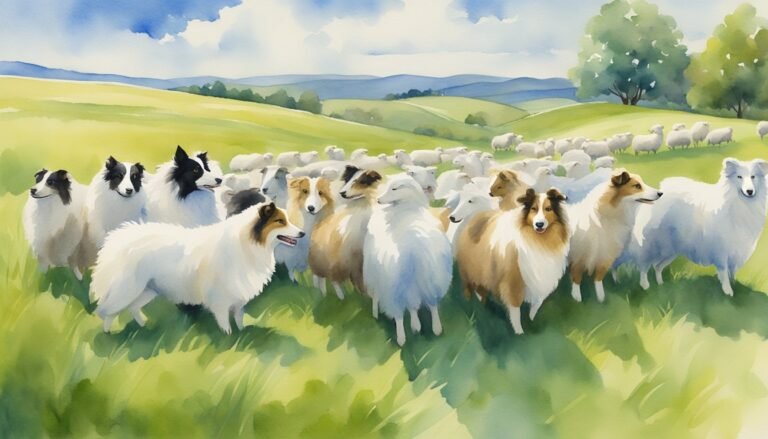
Shetland Sheepdogs, also known as Shelties, are small but mighty herding dogs.
These intelligent and agile pups have a rich history of working on farms and ranches.
Their compact size and quick minds make them stand out in the world of herding breeds.
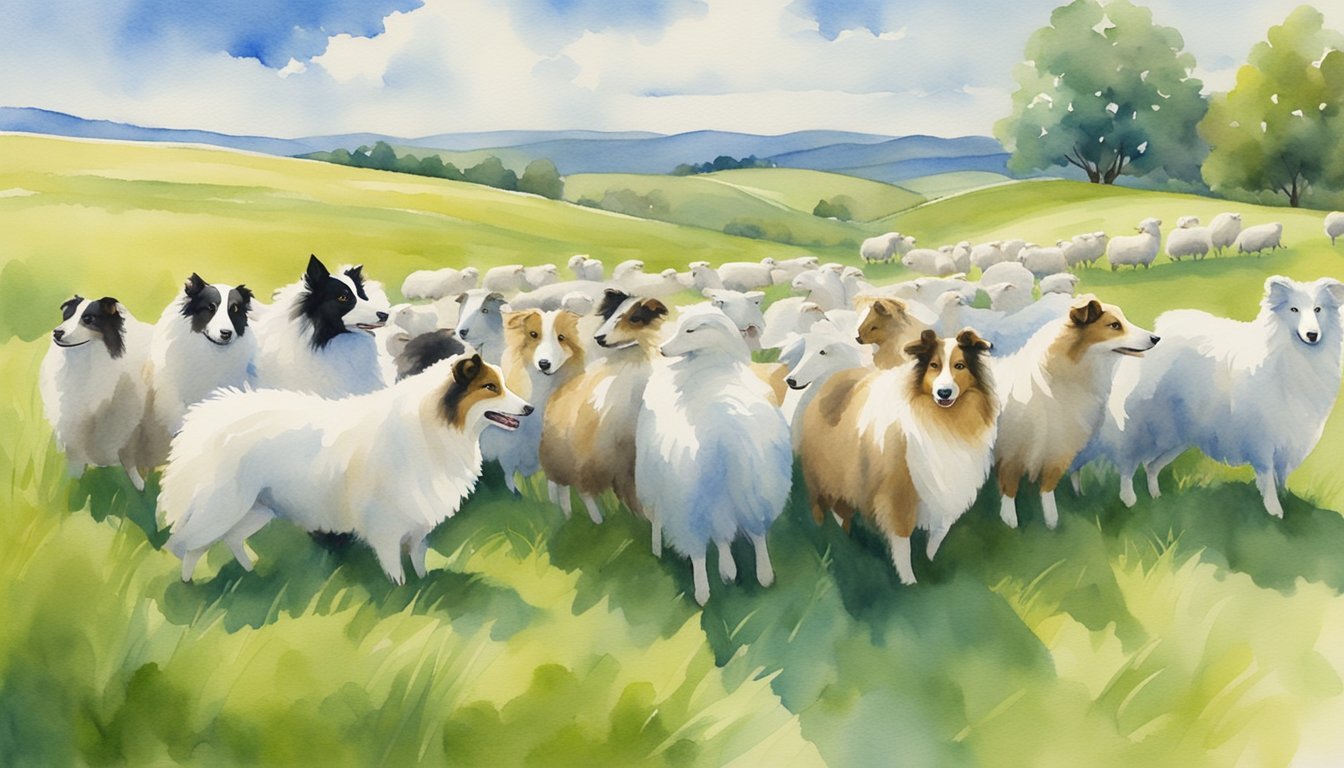
Shelties excel at herding tasks due to their keen instincts and boundless energy. You’ll find these dogs are not only great workers but also loving family pets.
Their versatility and charm have made them popular choices for both rural and urban homes.
In this article, we’ll explore why Shetland Sheepdogs are top-notch herding dogs.
1) Intelligent and Quick Learners
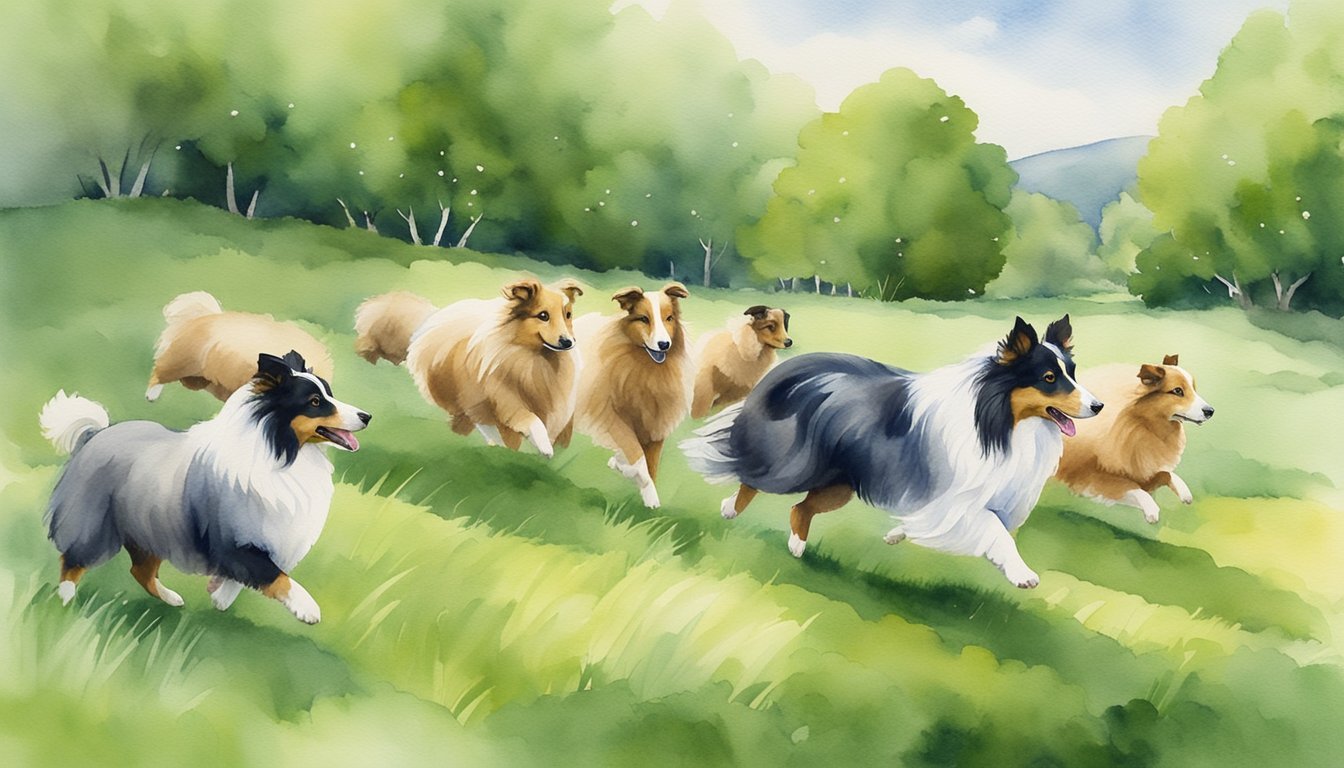
Shetland Sheepdogs are known for their keen intelligence.
This makes them stand out as excellent herding dogs.
You’ll find that Shelties pick up new commands and tasks with impressive speed.
Their smart nature allows them to understand complex instructions.
This means you can teach your Sheltie advanced herding techniques more easily than many other breeds.
Shelties have a strong desire to please their owners.
This trait, combined with their intelligence, makes training sessions productive and enjoyable.
You’ll likely find that your Sheltie learns new tricks and behaviors faster than you expect.
Shetland Sheepdogs excel in obedience.
Their high working IQ means they can follow directions well, even in challenging herding situations.
You can count on your Sheltie to respond quickly to your commands when managing livestock.
The breed’s quick learning ability extends beyond herding tasks.
You’ll notice your Sheltie picks up on household routines and adapts to new situations with ease.
This flexibility makes them great companions both on the farm and at home.
Remember, a Sheltie’s intelligence needs regular stimulation.
Provide your dog with puzzle toys and varied training exercises to keep their mind sharp.
This will help prevent boredom and maintain their eagerness to learn.
2) Loyal Companions
Shetland Sheepdogs are known for their unwavering loyalty to their families.
These dogs form strong bonds with their owners and love to be by your side.
You’ll find that Shelties are always eager to please.
They’ll follow you around the house and want to be involved in your daily activities.
Shelties are affectionate and devoted to their families.
They thrive on human companionship and don’t like being left alone for long periods.
Your Sheltie will be protective of you and your home.
They make excellent watchdogs, alerting you to any potential threats or strangers.
Despite their reserved nature with unfamiliar people, Shelties are incredibly loving and gentle with their family members.
They’re especially good with children when raised together.
You can count on your Shetland Sheepdog to be there for you through thick and thin.
Their loyalty extends beyond just being a pet – they truly become a part of your family.
These dogs are sensitive to your emotions and will often try to comfort you when you’re feeling down.
Their intuitive nature makes them great emotional support companions.
With a Sheltie by your side, you’ll never feel alone.
Their loyal and affectionate nature ensures you always have a faithful friend to rely on.
3) Excellent for Small Farms
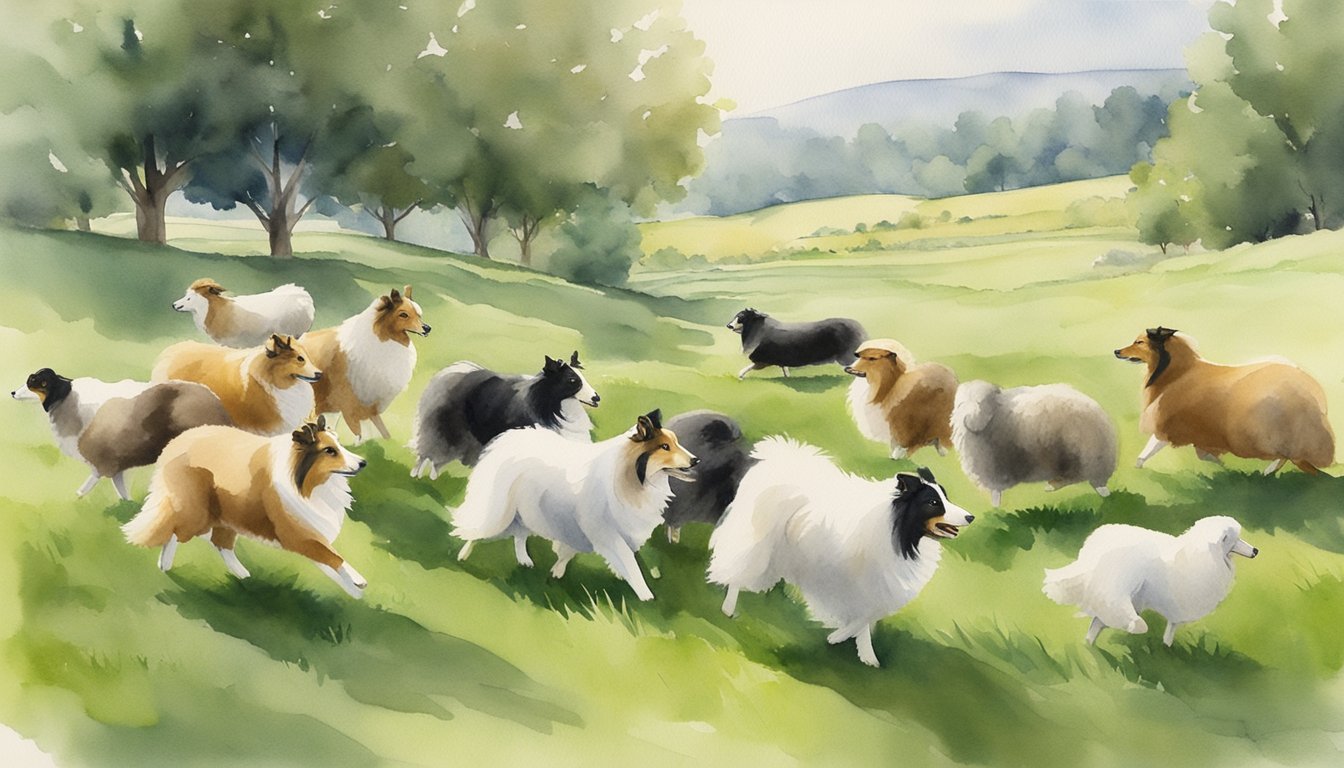
Shetland Sheepdogs are perfect for small farms.
Their compact size makes them ideal for working in tight spaces.
You’ll find they can easily navigate between crops and buildings without causing damage.
These dogs have a strong herding instinct.
They can effectively manage small flocks of sheep, goats, or poultry.
Their gentle nature means they won’t harm your livestock while herding.
Shelties are highly intelligent and easy to train.
You can teach them specific commands for your farm tasks.
They learn quickly and adapt well to different situations.
These dogs are known for their alertness.
They’ll keep watch over your property and warn you of any intruders.
This makes them excellent guardians for your farm animals and crops.
Shetland Sheepdogs have moderate exercise needs.
They’ll stay active working on your farm, but won’t require excessive exercise beyond their duties.
This balance is perfect for busy farmers.
Their weather-resistant double coat helps them work in various conditions.
You can rely on them in rain or shine.
Just remember to groom them regularly to prevent matting.
Shelties are known for their calm and friendly nature.
This makes them great companions for farm families.
They can switch from working dog to family pet with ease.
4) Great with Children

Shetland Sheepdogs are fantastic companions for families with kids.
Their gentle nature and patience make them ideal playmates for children of all ages.
Shelties are known for their friendliness.
They have a calm demeanor that helps them interact well with kids, even during boisterous play sessions.
These dogs are smart and can quickly learn how to behave around children.
They’re rarely aggressive, which adds to their suitability as family pets.
You’ll find that Shelties are protective of their young family members.
They often take on a watchful role, keeping an eye on the kids as if they were part of their flock.
Their small size is another plus.
Shelties are less likely to accidentally knock over small children during playtime compared to larger breeds.
These dogs are also highly trainable.
You can easily teach them how to interact gently with kids and follow rules about playtime behavior.
Shelties have plenty of energy for playing games with children.
They enjoy activities like fetch, which can keep both the dog and kids entertained for hours.
Remember to supervise interactions between young children and Shelties.
While these dogs are patient, they still need respect and gentle handling from kids.
5) Beautiful Appearance
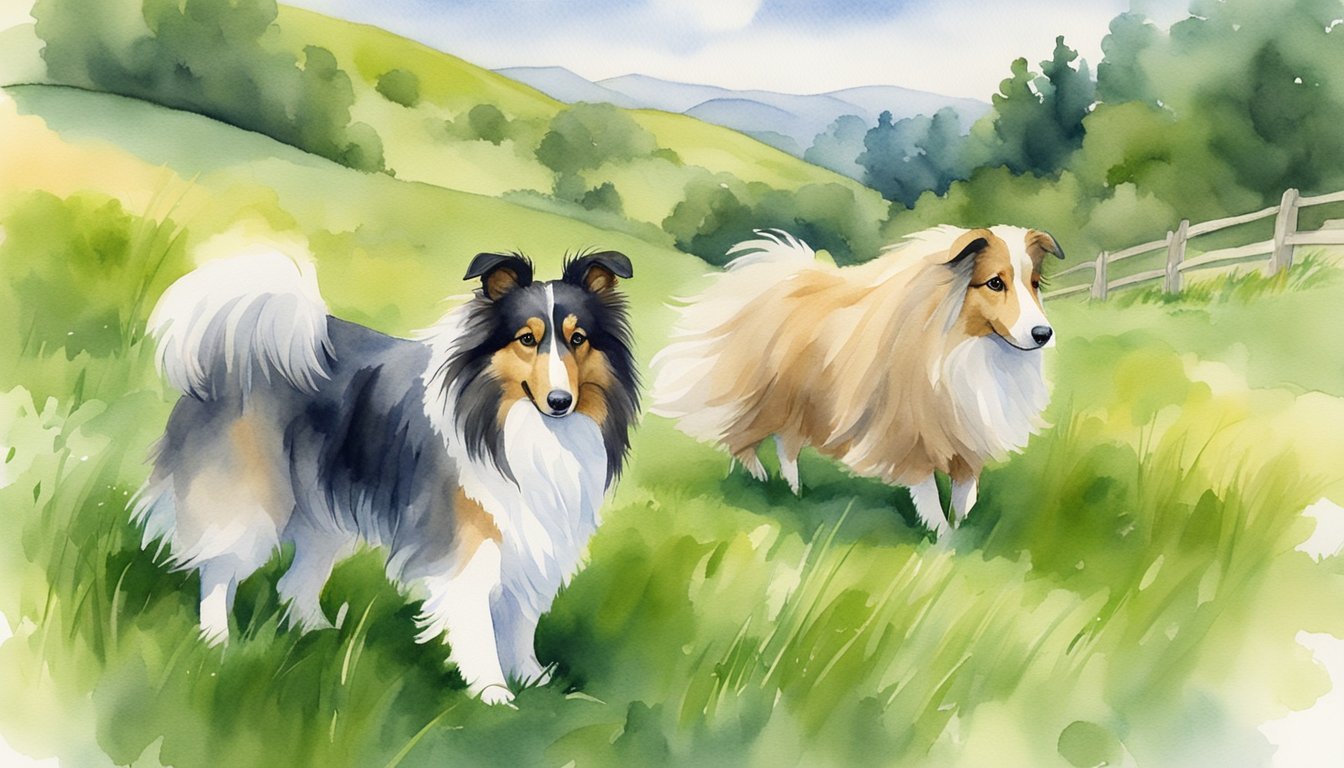
Shetland Sheepdogs have a stunning look that catches the eye.
Their long, thick double coat comes in various colors and patterns.
You’ll often see Shelties in sable, black, or blue merle.
Their coats may have white and tan markings too.
This mix of colors gives them a unique and eye-catching appearance.
Shelties have a fox-like face with almond-shaped eyes.
Their intelligent and alert expression adds to their charm.
Their small, erect ears perk up when they’re attentive.
These dogs have a graceful, well-proportioned body.
They’re small but not fragile.
Shelties move with an elegant, light-footed gait that shows off their agility.
Their fluffy tail is another standout feature.
It’s long and sweeps over their back, adding to their regal look.
Shelties’ coats need regular grooming to stay beautiful.
Brushing helps prevent matting and keeps their fur shiny.
With proper care, their coat remains a stunning feature.
The Shetland Sheepdog’s beauty isn’t just for show.
Their coat protects them from harsh weather, a trait from their herding background.
This blend of function and aesthetics makes Shelties truly special.
6) Adaptable to Various Environments
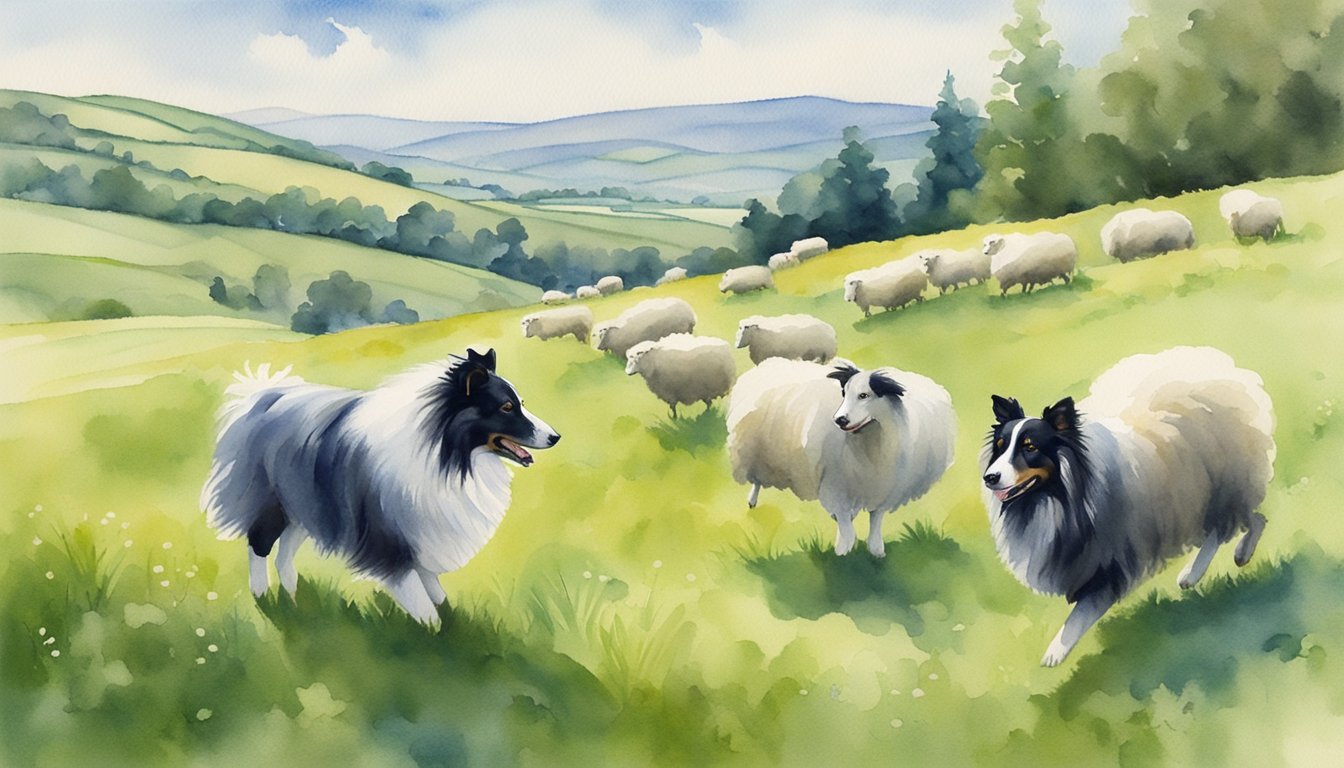
Shetland Sheepdogs are highly adaptable dogs that can thrive in different settings.
You’ll find these versatile pets fitting well in both urban and rural environments.
In cities, Shelties adjust nicely to apartment living.
Their small size makes them ideal for compact spaces.
They don’t need a huge yard to be happy, as long as you give them regular exercise and mental stimulation.
Rural areas are also great for Shetland Sheepdogs.
These dogs excel in open spaces where they can run and play.
Their herding instincts shine in countryside settings, making them perfect farm companions.
Shelties can handle different climates too.
Their thick double coat helps them stay warm in cold weather.
In hot climates, they’ll need extra care to prevent overheating, but they can adjust with proper attention.
These dogs are quick learners and pick up on household routines easily.
You’ll find they adapt well to changes in your lifestyle or living situation.
Their intelligent nature helps them understand and follow new rules quickly.
Shetland Sheepdogs are social animals that enjoy being part of family activities.
Whether you live alone or have a big family, these dogs will fit right in.
They’re good with children and can get along with other pets when socialized properly.
7) High Energy Levels
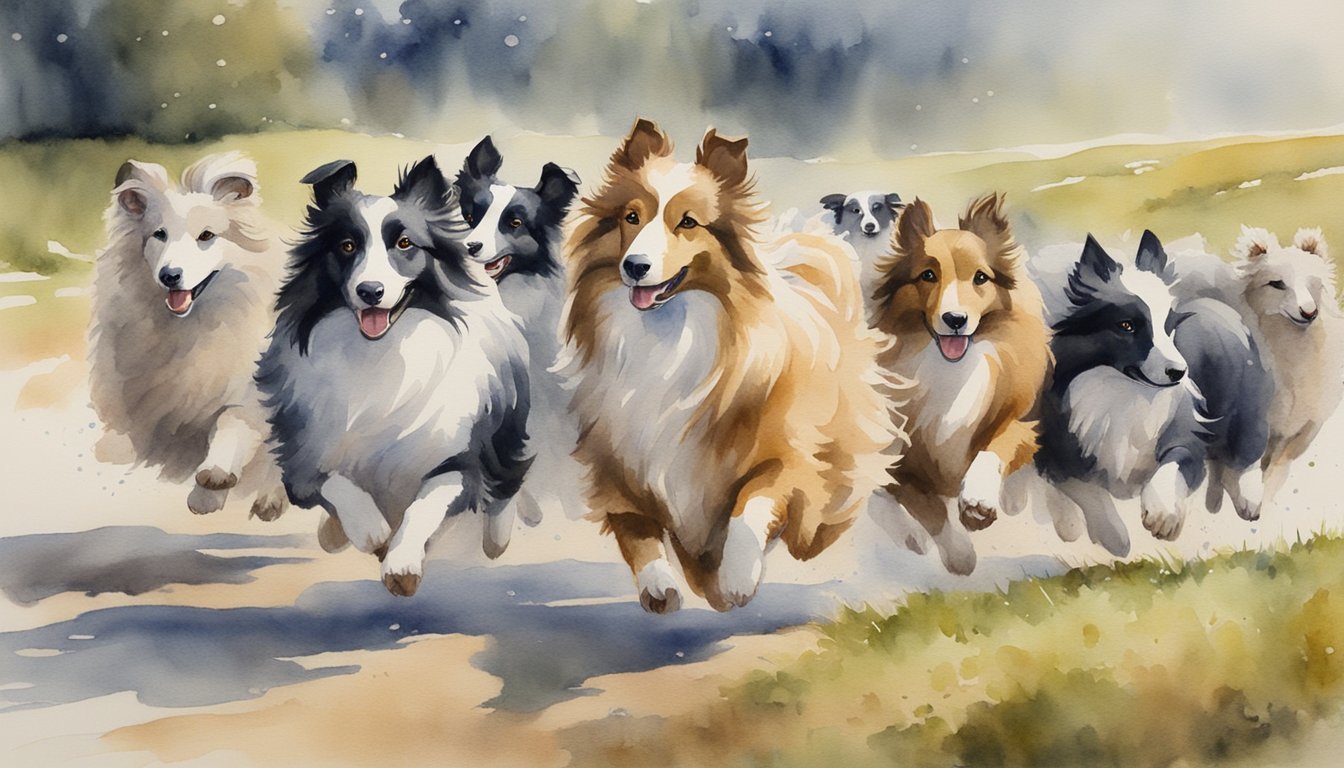
Shetland Sheepdogs are known for their high energy levels.
You’ll find these dogs are always ready for action and excitement.
Their herding background has given them a natural desire to stay active.
Shelties need plenty of exercise to keep them happy and healthy.
You can expect your Sheltie to enjoy daily walks, runs, or play sessions.
They excel at activities like fetch and agility training.
Mental stimulation is just as important for these smart dogs.
Puzzle toys and training exercises will help keep their minds sharp.
Without enough activity, Shelties may become bored or restless.
This can lead to unwanted behaviors like excessive barking or chewing.
You’ll find that Shetland Sheepdogs make great companions for active individuals or families.
They’ll happily join you for outdoor adventures or playtime in the backyard.
Their energy levels make them excellent partners for agility competitions.
You can train them to navigate obstacle courses with ease and enthusiasm.
Remember, a tired Sheltie is a happy Sheltie.
Regular exercise and mental challenges will help keep your dog content and well-behaved.
8) Natural Instinct to Herd
Shetland Sheepdogs have a strong natural instinct to herd.
This trait is deeply ingrained in their DNA, making them excellent at controlling and guiding livestock.
You’ll notice your Sheltie’s herding instincts in various ways.
They may try to gather and move groups of people or other animals by circling or running alongside them.
Shelties use their intelligence and agility to manage herds effectively.
They can quickly assess situations and make decisions to keep animals in line.
Their compact size allows them to maneuver easily around livestock.
This makes them ideal for working in tight spaces or with smaller animals.
Records show that 84% of Shelties tested display a gathering style when herding.
This means they move around the stock and the handler to keep the group together.
You might see your Sheltie trying to herd family members or other pets at home.
This is a natural expression of their instincts and can be channeled into positive activities.
Shelties’ herding abilities make them great partners for farmers and ranchers.
They excel at keeping livestock in order and protecting them from potential threats.
Even if you don’t live on a farm, you can engage your Sheltie’s herding instincts through activities like agility training or herding trials.
This helps satisfy their natural drive and keeps them mentally stimulated.
9) Protective Nature
Shetland Sheepdogs have a strong protective instinct.
You’ll find that your Sheltie keeps a watchful eye on your home and family.
They make excellent watchdogs, alerting you to any unusual sounds or strangers approaching.
Shelties are known to bark to warn their owners of potential threats.
This trait comes from their herding background, where they needed to alert shepherds to dangers.
Your Sheltie will likely be reserved with strangers.
They’re not aggressive, but they’ll remain cautious until they feel the newcomer is safe.
This protective nature extends to children in the family, making them great companions for kids.
Despite their small size, Shelties are brave.
They won’t hesitate to stand up to much larger animals if they feel their family is threatened.
This courage stems from their history of herding livestock on the rugged Shetland Islands.
You’ll appreciate how your Sheltie’s protective nature balances with their gentle temperament.
They’re not overly aggressive or territorial, but they’re always on guard.
This makes them ideal for families who want a dog that’s both loving and protective.
Remember, early socialization is key.
It helps your Sheltie distinguish between real threats and normal situations.
With proper training, you’ll have a well-balanced dog that knows when to be protective and when to relax.
10) Easy to Train
Shetland Sheepdogs are wonderfully easy to train.
Their high intelligence and eagerness to please make them quick learners.
You’ll find that your Sheltie picks up new commands and tricks with impressive speed.
These dogs have a strong desire to work and excel in obedience training.
Their herding background means they’re naturally attuned to human cues and directions.
This makes teaching basic commands like sit, stay, and come a breeze.
Shelties start learning early.
You can begin teaching basic commands when they’re as young as seven weeks old.
This early start helps establish good habits and a strong bond between you and your pup.
Mental exercise is crucial for Shelties.
Training sessions provide the perfect opportunity to challenge their minds.
You’ll find that your Sheltie thrives on the mental stimulation that comes with learning new skills.
Positive reinforcement works wonders with these sensitive dogs.
Praise, treats, and playtime are effective rewards that will motivate your Sheltie to learn.
Consistency in your training approach will yield the best results.
Remember that Shelties can be prone to barking.
Early training can help manage this tendency.
With patience and persistence, you can shape your Sheltie into a well-behaved and obedient companion.
11) Strong Work Ethic
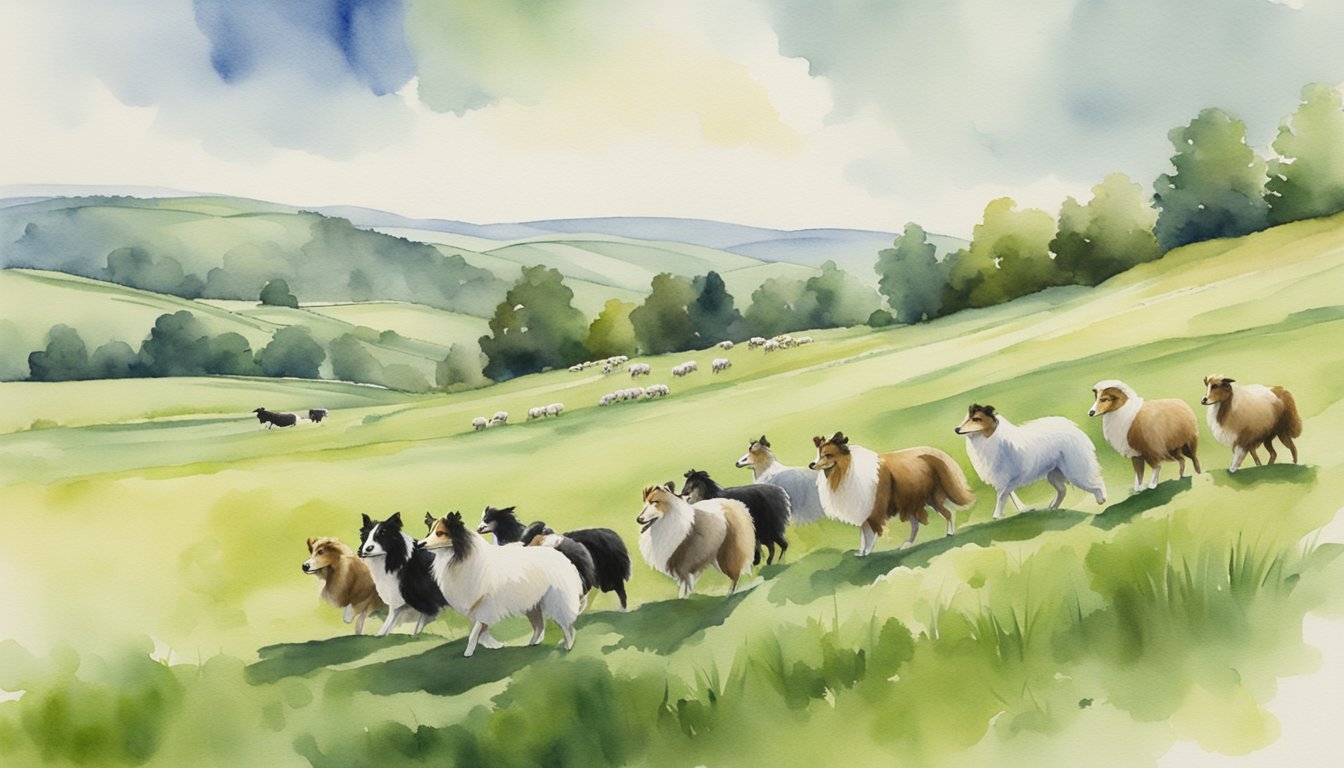
Shetland Sheepdogs have a powerful drive to work.
Their strong work ethic makes them excellent herding dogs.
You can count on Shelties to stay focused and dedicated to their tasks.
These dogs love having a job to do.
They thrive when given responsibilities and challenges.
Shelties will work tirelessly to complete their assigned duties.
Their herding instincts are deeply ingrained.
Many Shelties show a natural gathering style, moving around stock and their handler.
This innate behavior showcases their commitment to the herding task.
Shetland Sheepdogs are intelligent and quick learners.
They pick up new commands and routines with ease.
This ability helps them adapt to different herding situations and challenges.
You’ll find that Shelties remain alert and attentive while working.
They keep a watchful eye on their surroundings and respond quickly to changes in the herd or your commands.
Their stamina is impressive.
Shetland Sheepdogs can work for extended periods without losing focus or energy.
This endurance is crucial for long days of herding.
Even when not herding, Shelties apply their work ethic to other activities.
They excel in dog sports, obedience training, and as therapy dogs.
Their desire to please and work hard shines through in all they do.
History and Origin
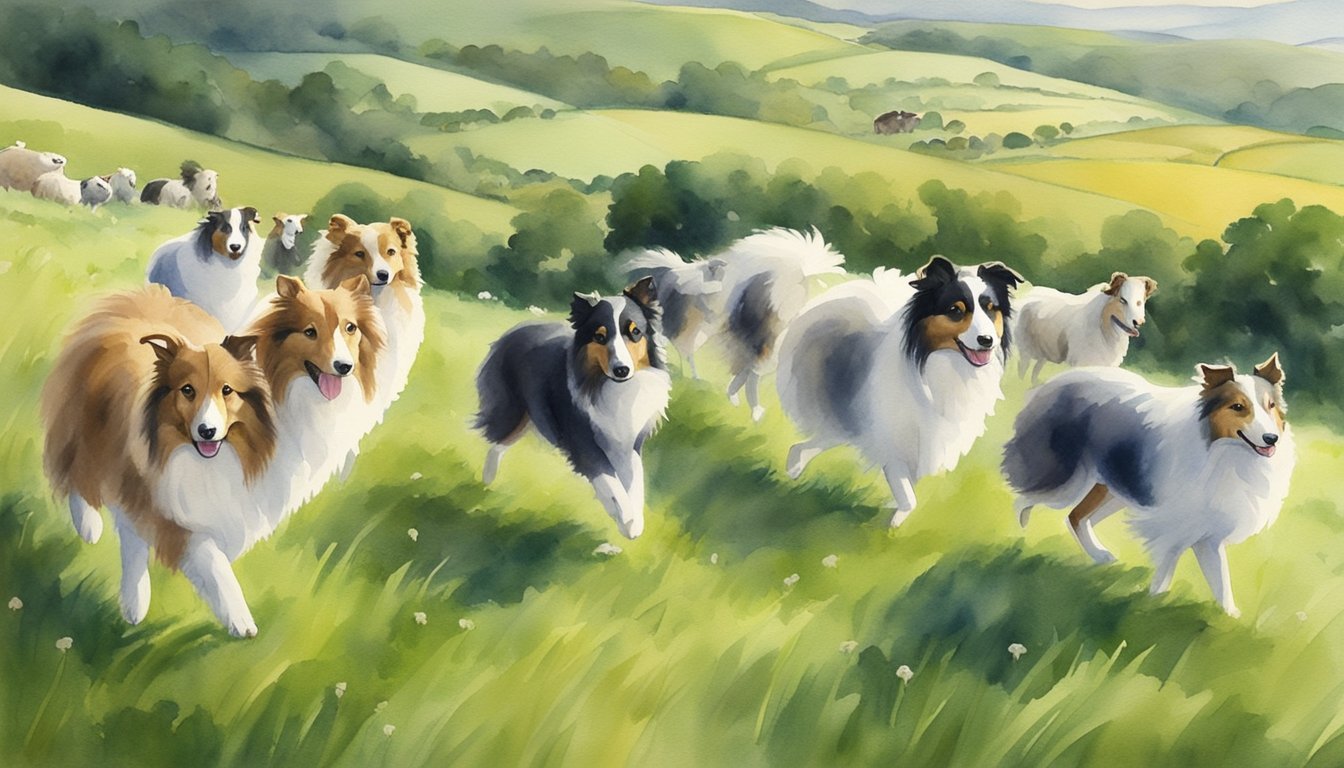
The Shetland Sheepdog has a rich history rooted in the Shetland Islands of Scotland.
Its development and roles have shaped it into the beloved herding breed we know today.
Breed Development
The Shetland Sheepdog, or Sheltie, originated in the Shetland Islands.
These islands are known for their small-sized animals, including sheep and ponies.
Breeders aimed to create a smaller herding dog suited for the islands’ unique environment.
Shelties were first recognized by The Kennel Club in 1909.
They were initially called Shetland Collies, but this name caused issues with Rough Collie breeders.
The name was then changed to Shetland Sheepdog.
The breed’s development involved crossing various dogs, including Rough Collies and other local breeds.
This mix resulted in the Sheltie’s distinctive appearance and herding abilities.
Historical Roles
Shetland Sheepdogs were employed for various tasks on the islands.
Their main job was herding the small Shetland sheep.
These dogs also helped with other farm duties.
Shelties kept birds and sheep out of vegetable gardens.
Their small size made them perfect for navigating the rocky terrain of the Shetland Islands.
They also herded poultry and the diminutive Shetland ponies.
These dogs were valued for their intelligence and versatility.
Their ability to work in harsh conditions made them indispensable to Shetland farmers.
Today, Shelties still excel in herding and other dog sports.
Physical Characteristics

Shetland Sheepdogs have distinct physical traits that make them well-suited for herding.
Their size, build, coat, and colors all contribute to their effectiveness as working dogs.
Size and Build
Shetland Sheepdogs are small to medium-sized dogs.
They typically stand 13-16 inches tall at the shoulder.
Their weight usually ranges from 15-25 pounds.
These compact dogs have an agile build that allows them to move quickly and easily.
Their bodies are well-proportioned, with a long, low-set tail.
Shelties have a distinctive head shape with upright ears that bend slightly at the tips.
This gives them an alert, attentive expression that’s perfect for watching over their flock.
Coat and Colors
Shetland Sheepdogs have a thick double coat that protects them from harsh weather.
The outer coat is long and straight, while the undercoat is soft and dense.
You’ll find Shelties in various colors:
- Sable (ranging from golden to mahogany)
- Tricolor (black, white, and tan)
- Blue merle (silver-blue and black)
- Black and white
Their coats often have white markings on the chest, legs, and face.
This variety of colors and patterns adds to their visual appeal.
Shelties shed quite a bit, especially during seasonal changes.
Regular grooming helps manage their coat and keeps them looking their best.
Herding Capabilities
Shetland Sheepdogs excel at herding due to their keen intelligence and natural instincts.
These traits make them highly effective in managing livestock and easy to train for herding tasks.
Innate Herding Instincts
Shetland Sheepdogs have a strong drive to herd. 84% of Shelties show a gathering style when herding, moving around the stock and handler.
This instinct allows them to naturally control and direct livestock.
You’ll notice your Sheltie’s herding behavior in everyday situations.
They may try to herd children, other pets, or even moving objects like cars.
Shelties use their small size to their advantage.
They can easily maneuver around livestock without intimidating them.
Their agility and speed help them respond quickly to animals that stray from the herd.
Training Methodologies
Training a Shetland Sheepdog for herding builds on their natural instincts.
Start with basic obedience commands like “come,” “stay,” and “leave it.” These form the foundation for more complex herding instructions.
Introduce your Sheltie to livestock gradually.
Begin with calm animals in a controlled setting.
Use positive reinforcement to encourage desired behaviors.
Practice directional commands to guide your dog’s movements:
- “Come bye” (move clockwise)
- “Away to me” (move counterclockwise)
- “Walk up” (move towards the stock)
- “That’ll do” (stop working)
Consistency is key in training.
Regular practice sessions help reinforce skills and strengthen the bond between you and your Sheltie.






